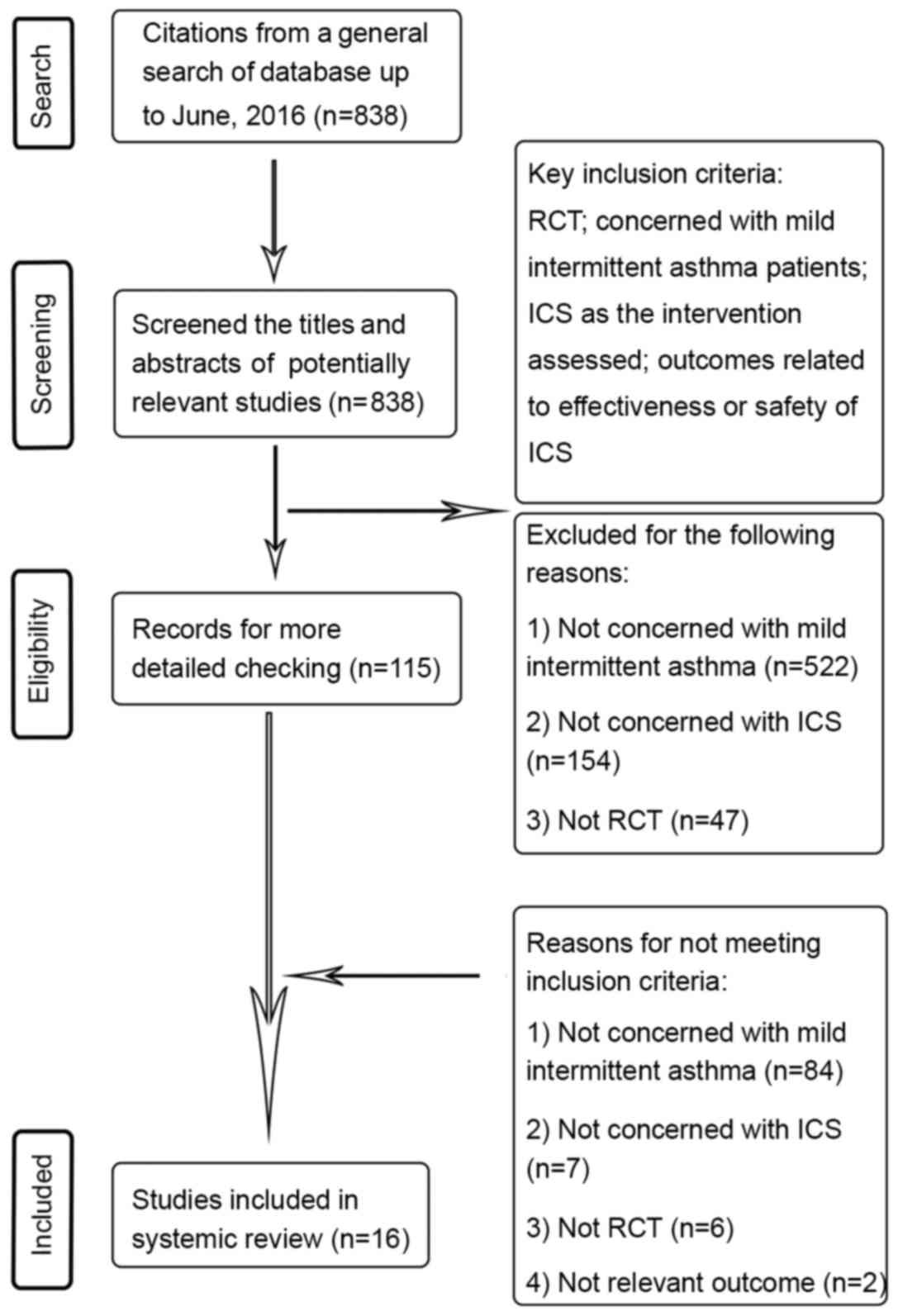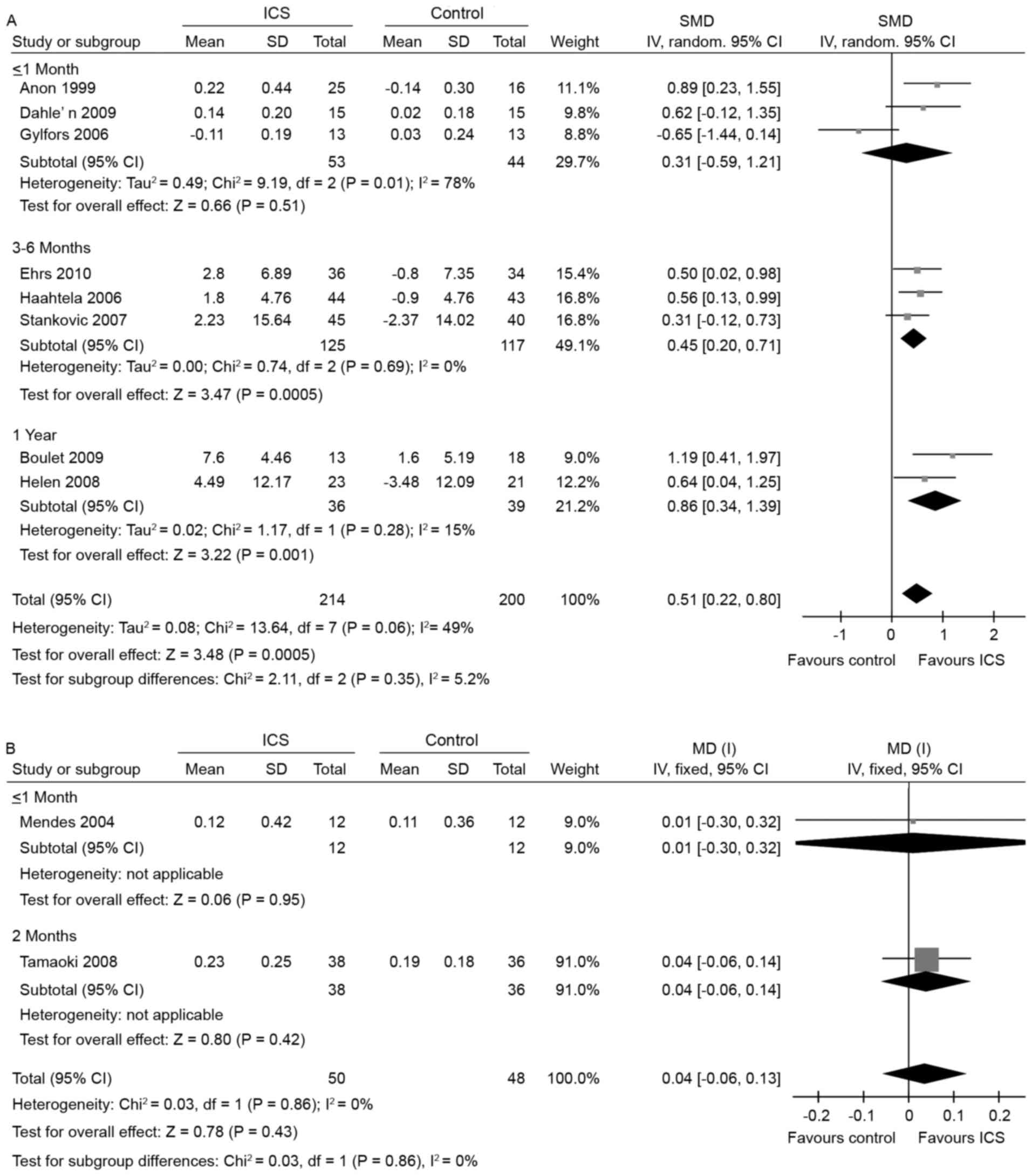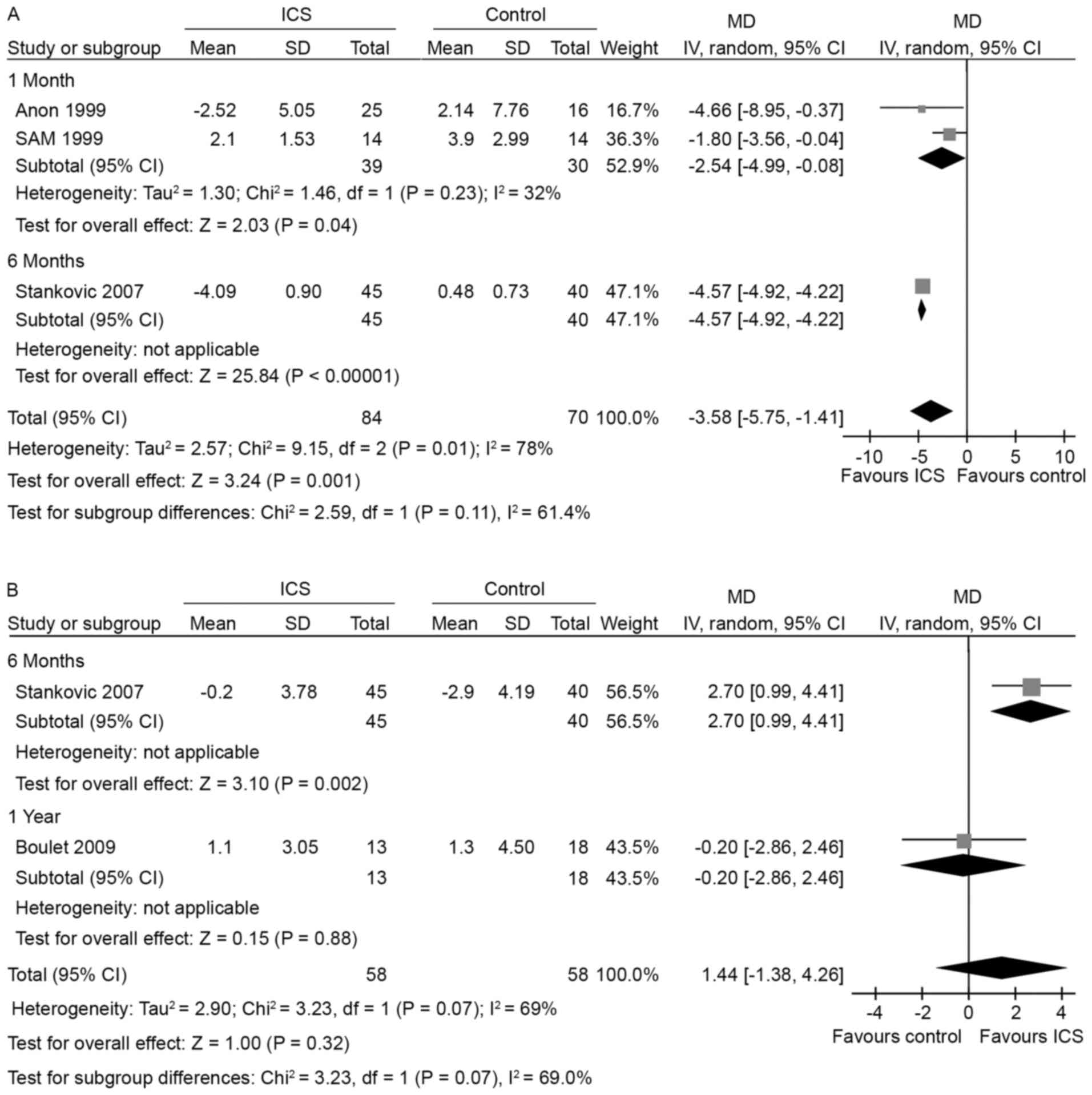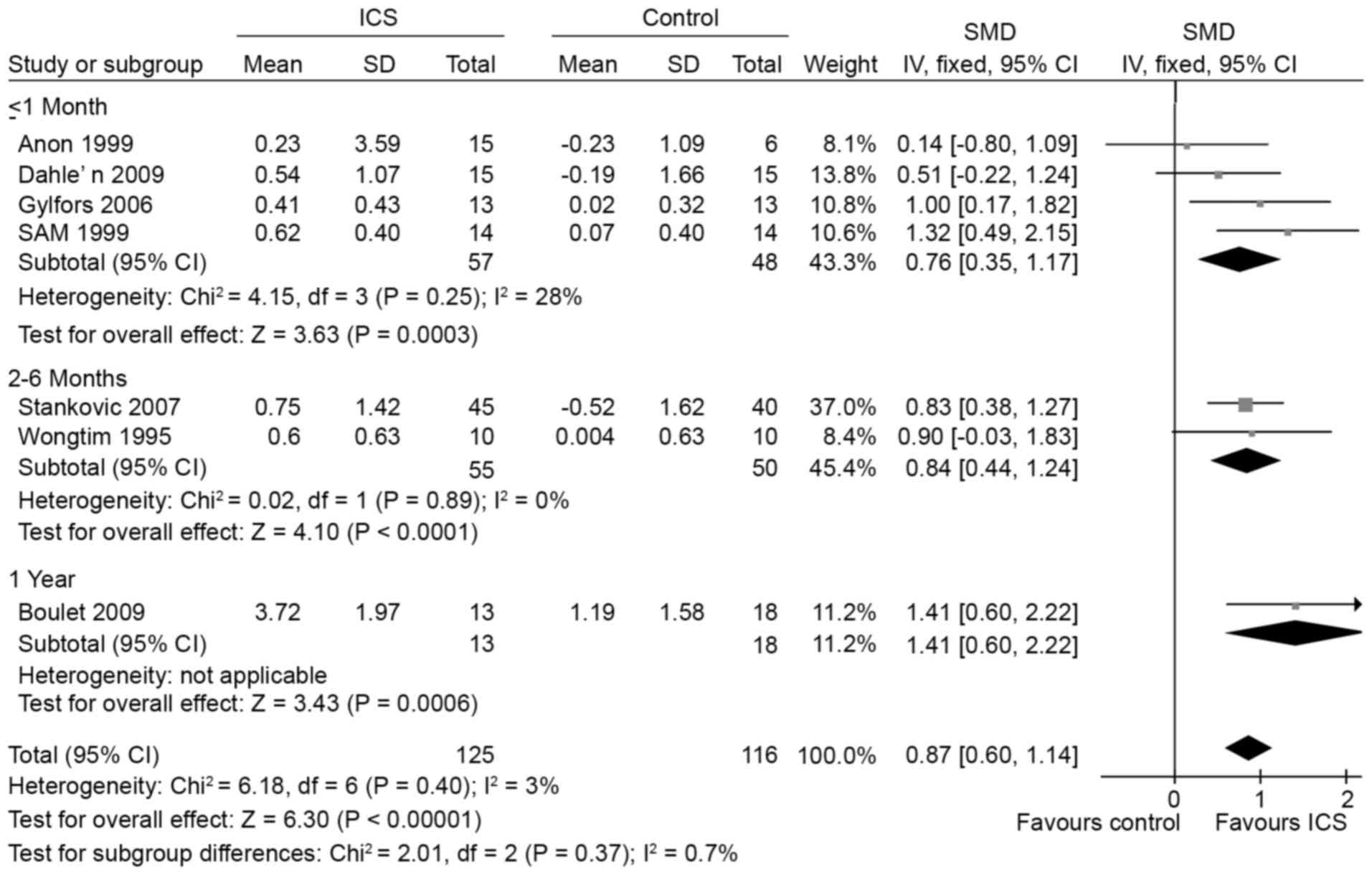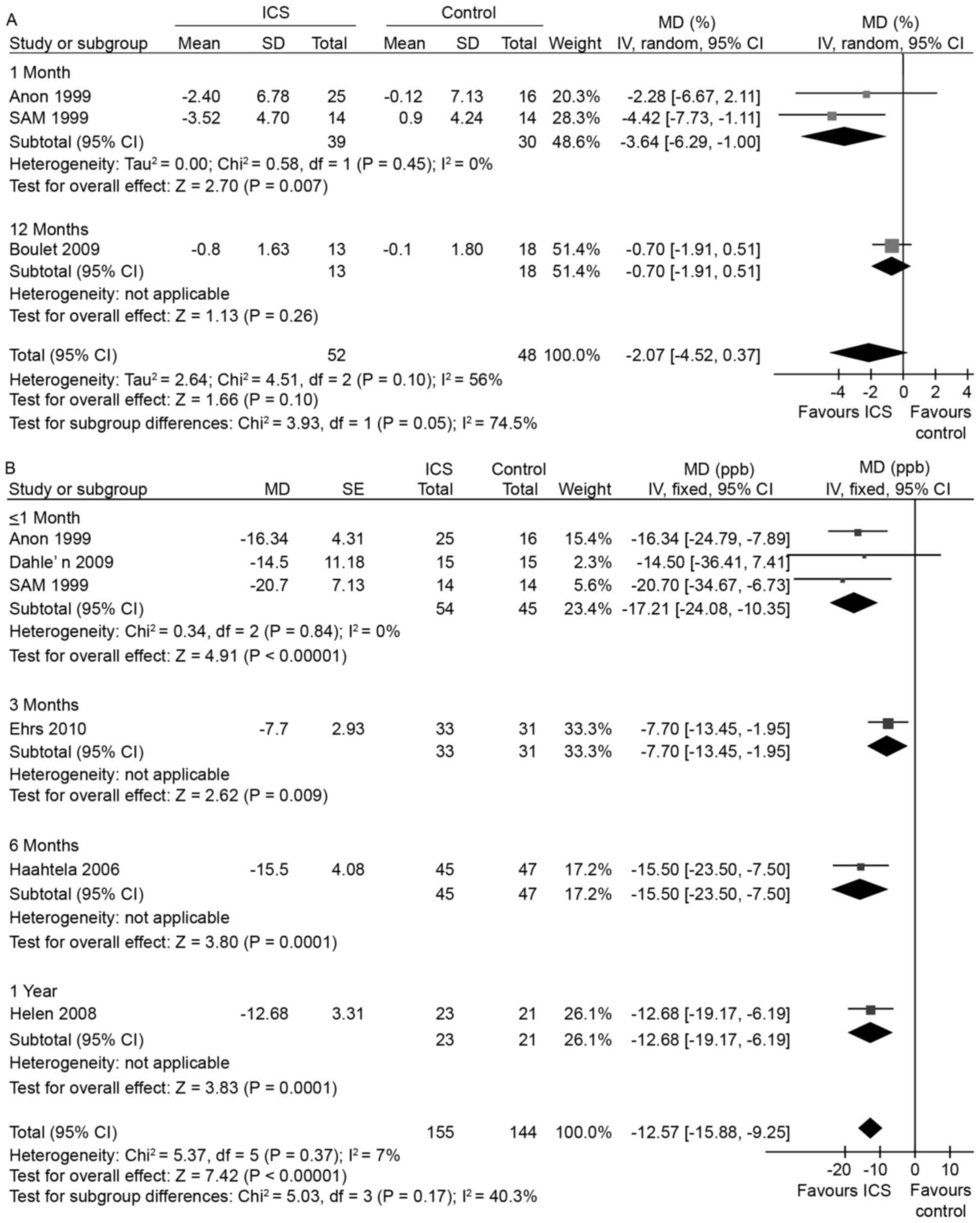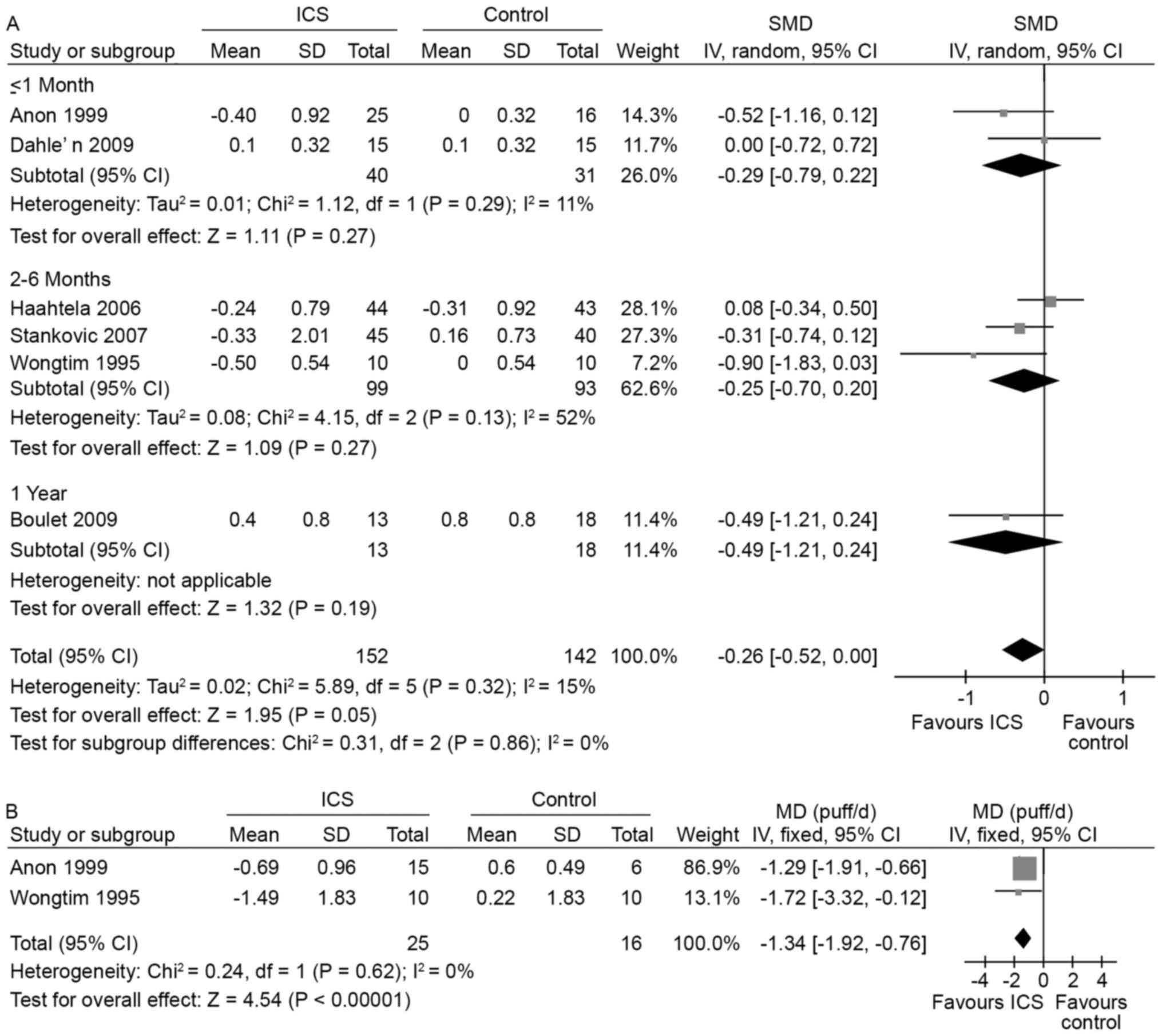|
1
|
Feng X and Lin J: An Epidemiology Survey
On The Prevalence And Associated Risk Factors Of Asthma Among
Adults In China. Peking Union Medical College Press; Beijing: pp.
942014
|
|
2
|
Global Initiative for Asthma (GINA), .
From the Global Strategy for Asthma Management and Prevention.
2015.http://www.ginasthma.orgMarch
5–2016
|
|
3
|
Humbert M, Holgate S, Boulet LP and
Bousquet J: Asthma control or severity: That is the question.
Allergy. 62:95–101. 2007. View Article : Google Scholar : PubMed/NCBI
|
|
4
|
Dusser D, Montani D, Chanez P, de Blic J,
Delacourt C, Deschildre A, Devillier P, Didier A, Leroyer C,
Marguet C, et al: Mild asthma: An expert review on epidemiology,
clinical characteristics and treatment recommendations. Allergy.
62:591–604. 2007. View Article : Google Scholar : PubMed/NCBI
|
|
5
|
Israel E and Drazen JM: Treating mild
asthma-when are inhaled steroids indicated? N Engl J Med.
331:737–739. 1994. View Article : Google Scholar : PubMed/NCBI
|
|
6
|
Van den Toorn LM: Clinical implications of
airway inflammation in mild intermittent asthma. Ann Allergy Asthma
Immunol. 92:589–594; quiz 595–7, 658. 2004. View Article : Google Scholar : PubMed/NCBI
|
|
7
|
Pedersen F, Holz O, Kanniess F, Zielen S,
Schulze J, Gillissen A, von Berg A, Berdel D, Beier J, Beeh K, et
al: Longitudinal measurement of airway inflammation over one year
in children and adults with intermittent asthma. BMC Res Notes.
7:9252014. View Article : Google Scholar : PubMed/NCBI
|
|
8
|
Higgins JPT, Deeks JJ and Altman DG:
Analysing data and undertaking meta-analysesCochrane Handbook for
Systematic Reviews of Interventions. Higgins JPT and Green S: John
Wiley & Sons; Chichester, UK: pp. 243–296. 2008
|
|
9
|
Castro H Ponce, Rodríguez Espino S and
Rodríguez Orozco AR: Administration of budesonide (inhaled steroid)
to children to control intermittent asthma. Rev Alerg Mex. 56:9–12.
2009.(In Spanish). PubMed/NCBI
|
|
10
|
Jatakanon A, Kharitonov S, Lim S and
Barnes PJ: Effect of differing doses of inhaled budesonide on
markers of airway inflammation in patients with mild asthma.
Thorax. 54:108–114. 1999. View Article : Google Scholar : PubMed/NCBI
|
|
11
|
Boulet LP, Turcotte H, Prince P, Lemière
C, Olivenstein R, Laprise C, Larivée P, Bégin P and Laviolette M:
Benefits of low-dose inhaled fluticasone on airway response and
inflammation in mild asthma. Respir Med. 103:1554–1563. 2009.
View Article : Google Scholar : PubMed/NCBI
|
|
12
|
Bousquet J, Meziane H, Chanez P, Mueser M
and Umile A: The response of two different dosages of beclometasone
dipropionate suspension for nebulization versus a standard dose of
beclometasone dipropionate via a metered-dose inhaler on
bronchoprovocation testing in adults with asthma. Respir Med. 97
Suppl B:11–14. 2003. View Article : Google Scholar
|
|
13
|
Dahlén B, Lantz AS, Ihre E, Skedinger M,
Henriksson E, Jörgensen L, Ekström T, Dahlén SE and Larsson K:
Effect of formoterol with or without budesonide in repeated
low-dose allergen challenge. Eur Respir J. 33:747–753. 2009.
View Article : Google Scholar : PubMed/NCBI
|
|
14
|
Ehrs PO, Sundblad BM and Larsson K: Effect
of fluticasone on markers of inflammation and quality of life in
steroid-naive patients with mild asthma. Clin Respir J. 4:51–58.
2010. View Article : Google Scholar : PubMed/NCBI
|
|
15
|
Gyllfors P, Dahlén SE, Kumlin M, Larsson K
and Dahlén B: Bronchial responsiveness to leukotriene D4 is
resistant to inhaled fluticasone propionate. J Allergy Clin
Immunol. 118:78–83. 2006. View Article : Google Scholar : PubMed/NCBI
|
|
16
|
Haahtela T, Tamminen K, Malmberg LP,
Zetterström O, Karjalainen J, Ylä-Outinen H, Svahn T, Ekström T and
Selroos O: Formoterol as needed with or without budesonide in
patients with intermittent asthma and raised NO levels in exhaled
air: A SOMA study. Eur Respir J. 28:748–755. 2006. View Article : Google Scholar : PubMed/NCBI
|
|
17
|
Reddel HK, Belousova EG, Marks GB and
Jenkins CR: Does continuous use of inhaled corticosteroids improve
outcomes in mild asthma? A double-blind randomised controlled
trial. Prim Care Respir J. 17:39–45. 2008. View Article : Google Scholar : PubMed/NCBI
|
|
18
|
Rüdiger JJ, Gencay M, Yang JQ, Bihl M,
Tamm M and Roth M: Fast beneficial systemic anti-inflammatory
effects of inhaled budesonide and formoterol on circulating
lymphocytes in asthma. Respirology. 18:840–847. 2013. View Article : Google Scholar : PubMed/NCBI
|
|
19
|
Mendes ES, Campos MA, Hurtado A and Wanner
A: Effect of montelukast and fluticasone propionate on airway
mucosal blood flow in asthma. Am J Respir Crit Care Med.
169:1131–1134. 2004. View Article : Google Scholar : PubMed/NCBI
|
|
20
|
Pizzichini MM, Kidney JC, Wong BJ, Morris
MM, Efthimiadis A, Dolovich J and Hargreave FE: Effect of
salmeterol compared with beclomethasone on allergen-induced
asthmatic and inflammatory responses. Eur Respir J. 9:449–455.
1996. View Article : Google Scholar : PubMed/NCBI
|
|
21
|
Lim S, Jatakanon A, John M, Gilbey T,
O'connor BJ, Chung KF and Barnes PJ: Effect of inhaled budesonide
on lung function and airway inflammation. Assessment by various
inflammatory markers in mild asthma. Am J Respir Crit Care Med.
159:22–30. 1999. View Article : Google Scholar : PubMed/NCBI
|
|
22
|
Stanković I, Pejcić T, Milenković B,
Jovanović D and Rancić M: Is there any point in a corticosteroid
treatment of intermittent asthma? Scientific World Journal.
7:1082–1089. 2007. View Article : Google Scholar : PubMed/NCBI
|
|
23
|
Tamaoki J, Isono K, Taira M, Tagaya E,
Nakata J, Kawatani K and Nagai A: Role of regular treatment with
inhaled corticosteroid or leukotriene receptor antagonist in mild
intermittent asthma. Allergy Asthma Proc. 29:pp. 189–196. 2008;
View Article : Google Scholar : PubMed/NCBI
|
|
24
|
Wongtim S, Mogmued S, Chareonlap P and
Limthongkul S: Effect of inhaled corticosteroids on bronchial
hyperresponsiveness in patients with mild asthma. Asian Pac J
Allergy Immunol. 13:81–85. 1995.PubMed/NCBI
|
|
25
|
Haahtela T, Järvinen M, Kava T, Kiviranta
K, Koskinen S, Lehtonen K, Nikander K, Persson T, Selroos O,
Sovijärvi A, et al: Effects of reducing or discontinuing inhaled
budesonide in patients with mild asthma. N Engl J Med. 331:700–705.
1994. View Article : Google Scholar : PubMed/NCBI
|
|
26
|
Papi A: Treatment strategies in mild
asthma. Curr Opin Pulm Med. 15:29–34. 2009. View Article : Google Scholar
|
|
27
|
Koh MS and Irving LB: The natural history
of asthma from childhood to adulthood. Int J Clin Pract.
61:1371–1374. 2007. View Article : Google Scholar : PubMed/NCBI
|
|
28
|
Fuhlbrigge AL and Kelly HW: Inhaled
corticosteroids in children: Effects on bone mineral density and
growth. Lancet Respir Med. 2:487–496. 2014. View Article : Google Scholar : PubMed/NCBI
|
|
29
|
O'Byrne PM, Barnes PJ, Rodriguez-Roisin R,
Runnerstrom E, Sandstrom T, Svensson K and Tattersfield A: Low dose
inhaled budesonide and formoterol in mild persistent asthma: The
OPTIMA randomized trial. Am J Respir Crit Care Med. 164:1392–1397.
2001. View Article : Google Scholar : PubMed/NCBI
|
|
30
|
Busse WW, Pedersen S, Pauwels RA, Tan WC,
Chen YZ, Lamm CJ and O'Byrne PM; START Investigators Group, : The
inhaled steroid treatment as regular therapy in early asthma
(START) study 5-year follow-up: Effectiveness of early intervention
with budesonide in mild persistent asthma. J Allergy Clin Immunol.
121:1167–1174. 2008. View Article : Google Scholar : PubMed/NCBI
|
|
31
|
Juniper EF, Kline PA, Vanzieleghem MA,
Ramsdale EH, O'Byrne PM and Hargreave FE: Effect of long-term
treatment with an inhaled corticosteroid (budesonide) on airway
hyperresponsiveness and clinical asthma in nonsteroid-dependent
asthmatics. Am Rev Respir Dis. 142:832–836. 1990. View Article : Google Scholar : PubMed/NCBI
|
|
32
|
Lemière C, Ernst P, Olivenstein R,
Yamauchi Y, Govindaraju K, Ludwig MS, Martin JG and Hamid Q: Airway
inflammation assessed by invasive and noninvasive means in severe
asthma: Eosinophilic and noneosinophilic phenotypes. J Allergy Clin
Immunol. 118:1033–1039. 2006. View Article : Google Scholar : PubMed/NCBI
|
|
33
|
Green RH, Brightling CE, Pavord ID and
Wardlaw AJ: Management of asthma in adults: Current therapy and
future directions. Postgrad Med J. 79:259–267. 2003. View Article : Google Scholar : PubMed/NCBI
|















